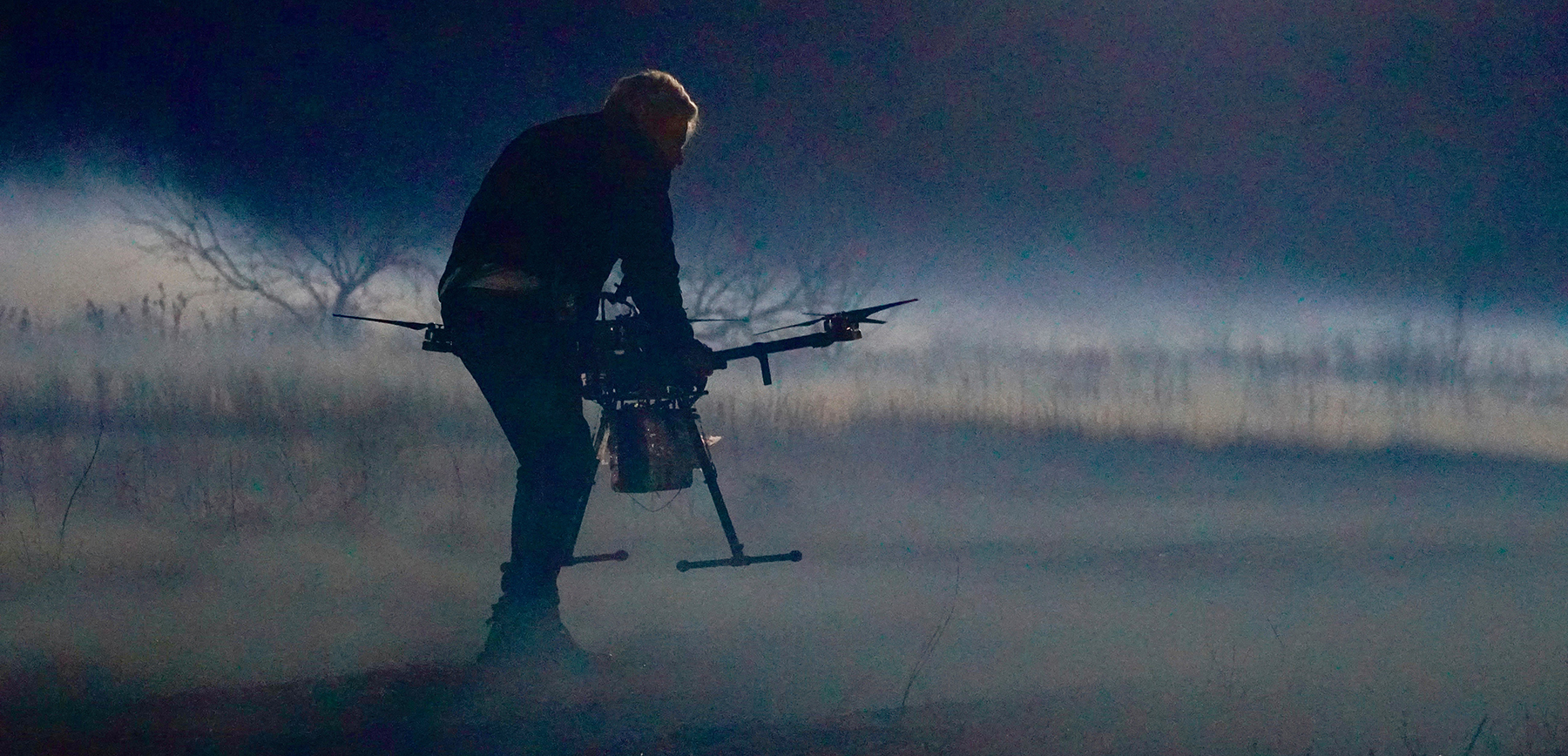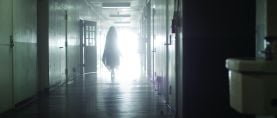
Working With Drones
Eric Austin, the director of media operations and chief pilot at M2 Aerials offers insight on getting started.
Eric Austin, the director of media operations and chief pilot at M2 Aerials offers insight on getting started.
Not too long ago, talk of drones was largely in reference to military strikes in foreign lands and was relegated to the nightly news or the daily paper. Today, though, drones have become as ubiquitous in motion-picture production as gimbals, cranes and remote heads.
Some might still view these camera-carrying drones as mere “toys” — and a case can be made that they’re being overused as all types of media follow the “just because we can” mentality — but for the right shot, a drone can be an extraordinary tool. Furthermore, just as remote camera heads have meant that fewer camera operators and 1st ACs have to be put in the air on the end of a crane arm, drones are resulting in fewer operators, assistants and pilots having to be in helicopters, often in dangerous situations, just to “get the shot.” Personally, I’m in favor of any piece of equipment that helps to take the risk out of our creative choices.

My own experience with drones has been very limited, so I turned to an expert: Eric Austin, the director of media operations and chief pilot at M2 Aerials. The company specializes in drone cinematography, with fully FAA-certified pilots led by Chris Courtney, M2’s director of operations. Courtney served more than 24 years in the U.S. Army and Coast Guard as an officer, aviator and paratrooper; he’s an expert in aviation operations, and he’s helped to build M2’s flight operations following military best practices.
Austin is an Emmy-winning aerial cinematographer; he’s contributed aerials to features including We Are Blood and Point Break (2015), and to television series including Treehouse Masters, Preacher and The Long Road Home. He was kind enough to answer my questions about drone work.
American Cinematographer: If I’m a cinematographer tasked with a drone shot for the first time, what’s the first thing I need to know?
Eric Austin: It’s best to bring in your drone team as early as possible so we can check to see what FAA authorizations might be needed at the location and advise on the best way to achieve the cinematographer’s vision. It’s a huge benefit if the cinematographer can provide storyboards or a shot list to the drone team. We like to have a call with the cinematographer, director or producer to make sure we have a clear understanding of the shots required before we show up on set. Once we arrive, we talk about the specifics the cinematographer would like for the drone shoot.
What aspects does your company handle?
M2 Aerials can handle all aspects of a drone shoot for all types of productions, including TV, film, advertising, sports and broadcast news. We arrive at the production site — anywhere across the country — with top-notch equipment, an experienced team, the necessary permits, and full insurance. We can also advise on location and timing, and we provide creative solutions to achieving a particular shot.
How many people come out on your team?
The crew size can vary based on the specific project and camera we are flying. For most TV work we are a two-man team: pilot and camera operator. For larger features, we might have three or four on the crew.
In the larger team, one of those individuals is the spotter, who keeps an eye on the drone itself and its flight path for safety, and one is an assistant — is that correct?
Yes, that’s correct.
What is the flying time of a drone with a high-end camera?
Technology keeps changing and getting better, and there is some new tech coming out that will change my answer. But today, flying our Red Weapon 8K Monstro with a Zeiss CZ.2 28-80mm [T2.9] zoom, we average a little over 12 minutes before a quick land and battery swap.
How often do you suggest a different drone or camera to a cinematographer?
Quite often, actually. Everyone understands how seriously cinematographers take their craft. Sometimes, however, aerial shots have to be looked at differently. The cost of flying our DJI Zenmuse X7 6K camera on an Inspire 2 drone is drastically different from flying an Arri Alexa Mini or Red Weapon. If it is web-only content or a TV show, a lot of times I’ll explain how capable a smaller platform is, and how well it will work to achieve the desired result.
What are some shots that drones are best suited to capture?
Any time you are shooting outdoors, there are great shots drones can get that make scenes more interesting to the eye. We can also provide a dynamic perspective for indoor shoots. Our most common shots are vehicle-tracking, establishing shots, overheads, Technocrane-style — all sorts of fancy ‘dolly’ shots. But if you are flying over cities, at a mountain, or over 60 mph, we’d suggest using a full-size helicopter.
How far can a typical drone fly?
Drones today have amazing range. Typically, 3,000 to 4,000 feet from the operator can be achieved easily. It’s rare that a flight that long would be required.
What benefits do drones have over helicopters?
Full-scale helicopters in movie production can be extremely dangerous for many reasons and are one of the leading causes of death on set. Often, when helicopters are used at very low altitudes on movie sets, they are flying below the range where they could land safely if there were certain failures. Since the creation of unmanned aerial cinematography, the operation of very-low-altitude camera ships has dropped to almost zero. By safely getting closer to the action, drones can create a more immersive experience for the viewer — and they are also typically less expensive.
If I wanted to become a drone owner and pilot, how should I begin?
Drones can be fun as a hobby, but to operate them safely and effectively in a production environment takes years of practice. Hobbyists and entry-level commercial users can find Part 107 [see Quick Tip below] training online, and practice on their own private property as long as it’s in an area where drones are allowed.
Does production have to file permits for drone shooting?
Production handles the typical film permits that are needed, and we assist with providing all the information that Film L.A. or another film office might need in order to approve the permit. We handle all the airspace and FAA requirements.
How can a production find out whether a drone can legally be flown in a certain area?
Flying unmanned aircraft systems in the National Airspace System [NAS] can be tricky. It is important for the production company to check in with us before scouting a location to see if special airspace authorizations will be required. Our flight-operations team checks the location on an aeronautical sectional to see if the location falls inside controlled airspace. If it does, we look to see if that airspace is part of the FAA’s LAANC [Low Altitude Authorization and Notification Capability] system, where we can request near-real-time processing of airspace authorizations below approved altitudes. With the growth of this system, it is getting easier and easier to fly drones all over the United States. There are sometimes local laws to be aware of, too, and we also handle that for productions.
What are the biggest limitations of drones?
You can do so many creative things with drones. The ability to have high-end cameras, perfectly stabilized, flying anywhere you want, with full FIZ control, for a full 12 minutes, is absolutely amazing. Your imagination is really the biggest limitation.
Quick Tip: Part 107
In June 2016, the Federal Aviation Administration announced new regulations governing small unmanned aerial systems, titled “Part 107.” These regulations effectively created a certification process for UAS — aka drone — owner-pilots to be able to fly their aircraft; Part 107 governs drones that weigh less than 55 pounds and are engaged in commercial activities. The rules require pilots to keep drones within line-of-sight and to fly only during daylight and twilight — although night flying can be done with a specific waiver — and regulate the height and speed at which a commercial small UAS can fly.
To obtain Part 107 certification, the pilot must be at least 16 years of age and pass an initial knowledge test at an FAA-approved testing center, along with a security background check.



